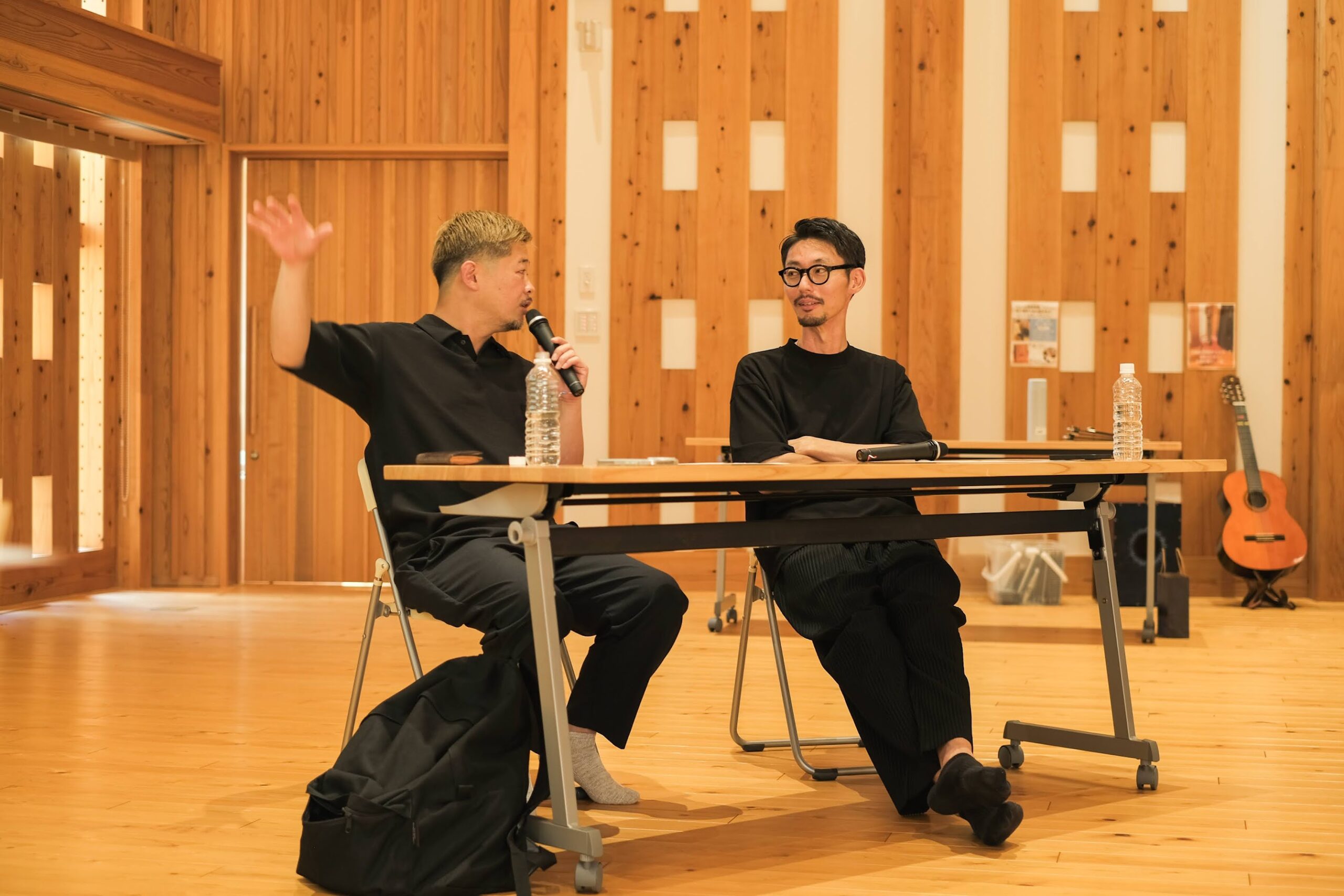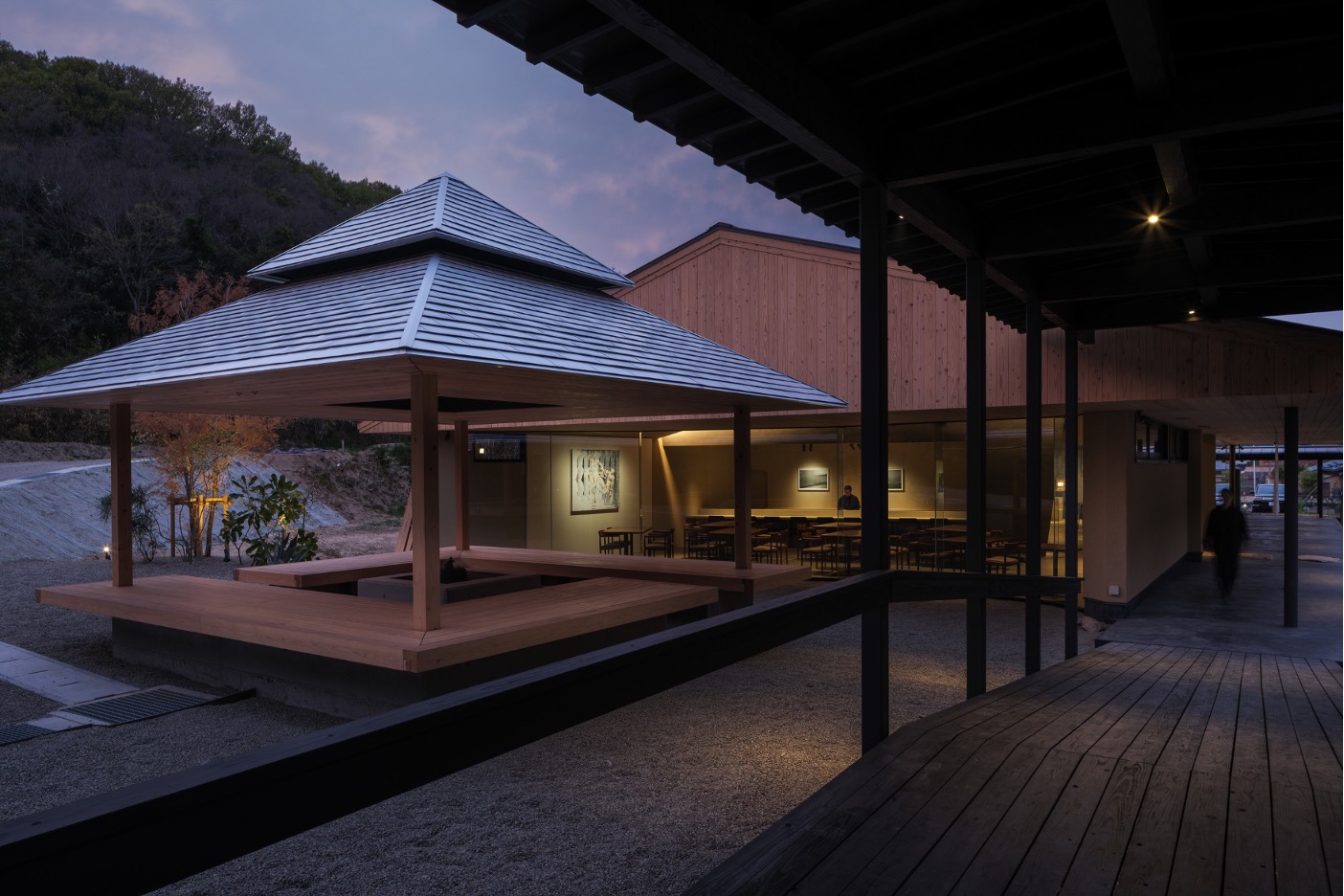Creating Together, Not Just Hiring a Designer: Behind the Branding of Naoshima Ryokan Roka
notto’s project, Dialocal, features discussions with local business leaders across Japan. Dialocal is a coined word combining “Dialog” and “Local.” The theme is design and management, and we aim to introduce attractive business owners who are “Changing the regions through design.”
In the second installment, we will bring you a public discussion with Mr. Sasaki, a long-time friend who has been an ally for ten years and has changed nottuo’s design career.

*This article is an edited and written version of a part of the discussion from the Regional Revitalization Cooperation Team training held in Nishi-Awakura Village on September 6, 2023.
Index
- The Ryokan as a Venue for Regional Presentation and Communication
- Selecting 1000 Items to Embody the Worldview of Roka
- Enhancing Service Quality Through Internalization of Concepts Rather Than Manual Creation
- Establishing a New Standard for Ryokans to Promote the Setouchi Region Globally
- Wanting to Create the Ryokan Together with nottuo Instead of Hiring a Famous Designer
The Ryokan as a Venue for Regional Presentation and Communication
Hada : Mr. Sasaki, you are the manager of “Kifu no Sato,” a ryokan in Yunogo, Okayama, which has been in your family for four generations. You often mention that creating a ryokan is akin to town development. Could you elaborate on this thought?
Sasaki : I believe that a ryokan serves as a venue for regional presentation and communication. For example, we purchase carefully cultivated local rice and use it in the ryokan. Guests enjoy it, and if they are satisfied with the taste, they can buy the rice sold in our gift shop. They can then enjoy the rice at home.
When the new rice season arrives a year later, we inform our guests, encouraging them to return to the ryokan. If they enjoy the new rice again, they might buy extra for their friends. This process continues, drawing more and more people into the cycle. This concept applies not only to rice but also to products like miso and sake.
Hada : I heard that you once aspired to be a novelist and worked at a publishing company. Your approach to business seems to reflect an editor’s perspective.
Sasaki : That might be true. There are various types of successors in the ryokan business, each with their own strengths and weaknesses. While some are strong with numbers, that’s not my forte (laughs).
Since our ryokan is deeply rooted in the community, I want to effectively convey the local charm. The more excellent the products made by nearby shops and farmers, the better the ryokan becomes. Therefore, I want to work together with everyone in the community.

Selecting 1000 Items to Embody the Worldview of Roka
Hada : Mr. Sasaki, who manages the ryokan with a community-editing perspective, opened the Naoshima Ryokan Roka in April 2022 on Naoshima Island, known for contemporary art. What challenges did you face during the branding process from the planning stage?
Suzuki : There were many challenges. Creating a ryokan from scratch involves making numerous decisions. For instance, we had to select 1000 items for Roka, from towels to slippers and in-room clothing. Each item had to be sourced, sampled, discussed, and finalized. If we couldn’t find something suitable for Roka, we had to create it from scratch, repeating this process 1000 times.
Hada : I remember a new staff member, Ojun, who had just joined nottuo at the time, lamenting, “We can’t find good slippers.” I was also setting up a dining facility at the time, so I understood the difficulties of selecting supplies. Easily found items often felt too familiar, and even when we found something satisfactory, the cost was sometimes too high.
Suzuki : There were days when we had 11-hour meetings just for selecting supplies. But this was essential for creating the world of Roka. No matter how great the space and food are, if the towel is rough or the slippers sticky, it disappoints guests. We had to design considering every possible guest experience and emotion. Even after selecting items before the opening, we continue to improve based on daily feedback and usage.

Enhancing Service Quality Through Internalization of Concepts Rather Than Manual Creation
Hada : Even if the rooms and meals are excellent, poor staff response can drastically lower satisfaction. Since the quality of service in a ryokan depends heavily on individual communication skills, how do you design the quality of service?
Sasaki : We focus on sharing the intent and background behind the service rather than just the methods. It’s essential that everyone understands and can convey the concept in their own words. I once saw the Hotel Okura’s service manual, which didn’t detail specific methods but explained the design intent behind the logo. We need to understand ourselves before explaining to guests.
Suzuki : Before Roka’s opening, we held a full-day training session for all staff to understand the concept and design.
Sasaki : For example, Roka’s guest room open-air baths are visible from both inside and outside. They are designed for partners to spend hours together enjoying the same view. When explained, guests say, “This is the kind of ryokan I wanted.” If not explained properly, they might think, “Why is this bath so inconvenient?” This makes it challenging and interesting (laughs).

Establishing a New Standard for Ryokans to Promote the Setouchi Region Globally
Sasaki : Roka’s design is entirely different from traditional Japanese ryokans. It caters to foreign visitors to Naoshima. Many Japanese guests prefer privacy and relaxation in ryokans, so rooms often have TVs and in-room dining options. On the other hand, many foreign visitors look forward to meeting new people during their travels.

Suzuki : The central irori (hearth) embodies the experiences from Mr. Sasaki’s extensive travels.
Sasaki : Roka has an irori at its center, where art-loving travelers from around the world can gather and converse over tea. The ryokan is not designed for solitary experiences but for fostering interactions among guests, especially during longer stays.
Suzuki : Mr. Sasaki envisions promoting Setouchi globally and aims to establish new standards for ryokans through Roka. We strived to create a standard that would be recognized worldwide.

Wanting to Create the Ryokan Together with nottuo Instead of Hiring a Famous Designer
Hada : Lastly, I’d like to ask about the relationship between you as the manager and the designer, Mr. Suzuki. You’ve been working together for over 10 years. What do you think of each other?
Suzuki : Mr. Sasaki is a client but also a senior mentor in life. I respect him as a businessperson and as an individual. I’ll never forget when I told him in my late 20s, “I’m enjoying work more and more as I approach 30.” He replied, “The 30s are fun, but the 40s are even better.” It’s inspiring to see someone enjoying both work and life. We often discuss philosophical topics like the meaning of happiness over drinks. My job is to design, but it’s rare to share and enjoy ideas that aren’t yet tangible. I’m grateful for that.
Sasaki : I feel the same way. It’s fun to be together. Mr. Suzuki delivers results faster and better than I expect. Over the years, he’s designed many places for us, and his quality surpasses what others could achieve. Even with rough instructions like, “Mr. Suzuki, could you do it like this?” he brings my ideas to life. We’ve been discussing and creating Roka for about three years. At one point, I considered hiring a famous designer like Kenya Hara for such a globally renowned location as Naoshima. But I ultimately chose Mr. Suzuki, believing that he could incorporate something valuable that a famous designer couldn’t.

Suzuki : I’m very happy to hear that. Roka has won many prestigious awards like the “iF DESIGN AWARD 2023” and the “DFA Asia Design Award 2022”. It’s the result of continuously thinking together about how to materialize Mr. Sasaki’s vision through design. We’ve had countless discussions.
Sasaki : We indeed talk a lot. Half of our regular meetings are side conversations (laughs). It’s hard to distinguish between work and play. In fact, there’s little difference between the two. It feels comfortable, and I value who I work with more than what I do. I’m very happy that our relationship has lasted 10 years. (End)


